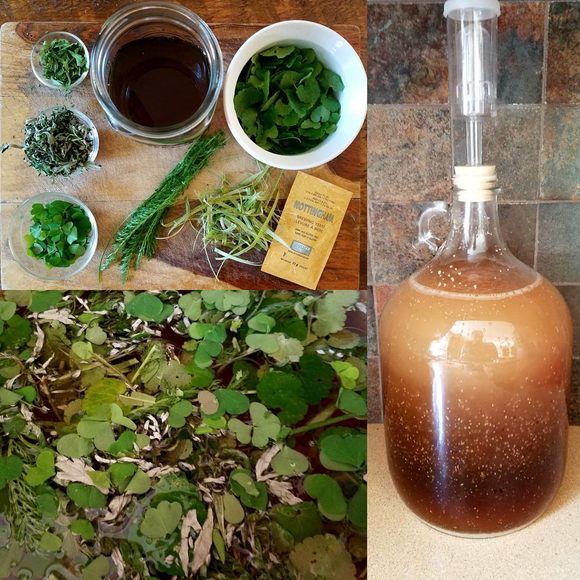Drinks
Gruit Ale
Brewers are replacing hops with sweet, aromatic herbs to resurrect this extinct beer.
So you’ve sipped IPAs, chugged stouts, and savored porters, but have you tried a gruit ale? You may not have heard of it, but gruit ale was the go-to beer in the Middle Ages, and it’s now making a comeback.
This beer recipe substitutes hops with other botanicals, which infuse gruit ales with a piquancy and sweetness. Some of these herbs sound like ingredients you’d need for Harry Potter’s potion class: mugwort, ground ivy, horehound, and sweet gale. Others may be more familiar names such as ginger, aniseed, and juniper berries.
As strange as these ingredients may sound to modern brewers, gruit beer was once the default style. That all changed with the implementation of the German beer purity law known as Reinheitsgebot in 1516. The law declared that only hops, water, and barley could be used in beer production (yeast had yet to be discovered), leaving little room for gruit. We can also thank religion for killing off these ales: Since some of the herbs had alleged aphrodisiac effects, party-pooping Puritans quickly ended the fun by substituting these additives with hops.
With these changes, gruit beers faded from taverns. It wasn’t until the 1990s that a few microbreweries in the United States and United Kingdom resurrected the extinct ales. Today, breweries and many home-brewers around the world make them.
So what does gruit beer taste like? Since the herbal profile changes from recipe to recipe, you’ll find a diversity of flavors, but one thing that gruit drinkers note across the board is sweetness. Without the hops, gruit ale loses that signature bitterness we come to associate with beer. You may find it hard to imagine beer without that hoppy flavor, but if you’re an adventurous beer lover you may want to add gruit ale to your beer tasting bucket list.
Where to Try It
-
This brewery's Weekapaug Gruit Ale replaces hops with sweet gale, yarrow, wild rosemary, Labrador tea, licorice root, and nettles. It's typically available in the spring.
-
Earth Eagle Brewings
165 High Street, Portsmouth, New Hampshire, United StatesThis New Hampshire brewery makes multiple gruit ales. Check out their website for what's on tap: eartheaglebrewings.com.
Written By
 jwalker
jwalker
Sources
- www.americancraftbeer.com/what-the-hell-is-a-gruit-ale/
- books.google.com/books?id=Ga4MYyZq-RMC&printsec=frontcover&dq=oxford+companion+to+beer&hl=en&sa=X&ved=0ahUKEwiZhqLt757bAhWD71MKHZgvBZMQ6AEIJzAA#v=onepage&q=gruit&f=false
- books.google.com/books?id=ss2QAwAAQBAJ&printsec=frontcover&dq=gruit+ale&hl=en&sa=X&ved=0ahUKEwju_N2f8J7bAhWLz1MKHdo_AOUQ6AEIJzAA#v=onepage&q=gruit%20ale&f=false













